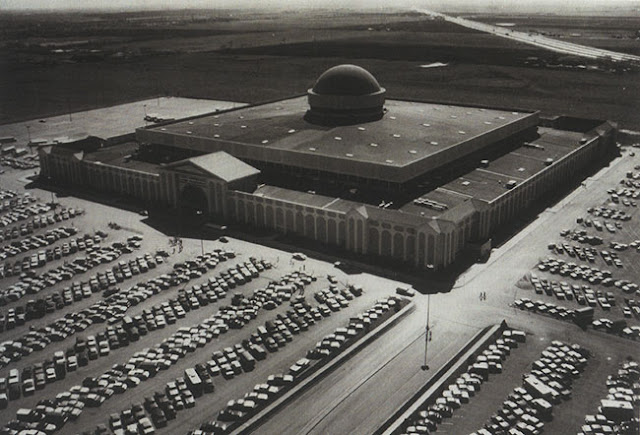

In November of 1975, the "Comedy King of Air," 56-year-old Jimmy Troy, fell 20 feet to his death from the trapeze in an aerial accident at the Old Chicago Circus.

A spiral entrance ramp led from the mall level down to the park level, where the rides were arranged in a large circle. Trees, benches, and streetlights provided a park-like atmosphere. The "Fairgrounds" had "31 great rides and attractions," all crammed into the domed center of the building.


Many rock bands, musicians, and other celebrities appeared at Old Chicago. They performed in an area called the "Old Chicago Stage," which was added in 1978. The stage was placed where the Paratrooper ride stood (next to the Haunted House). The Paratrooper ride was sold instead of being moved elsewhere in the park. Here is a partial list of performers: Black Oak Arkansas - (Go Jim Dandy!), Tommy James and the Shondells, The Coasters (Alley OOP, Charlie Brown), Wild Cherry (Play that Funky Music), Willie Aimes - (Eight is Enough, Charles in Charge), Anson Williams (Potsie from Happy Days), Freddie' Boom Boom' Cannon (Palisades Park), Chubby Checker, Chuck Berry, Peter Tork and the Monkees (He was the only touring member), Jan and Dean (Surf City), Jerry Lee Lewis, Little Richard, Rip Taylor (Toupee and all), Sha-Na-Na, The Ramones (One of the original punk bands), Rex Smith, Gary' US' Bonds, The Shirelles, Blood, Sweat, and Tears, The Hudson Brothers (The Razzle Dazzle show), Gloria Gaynor (I Will Survive), The Guess Who (American Woman), Rick Nelson, The Star Wars Robots (C3PO and R2D2), and Karl Wellenda.
 |
| Peter Labella, playing the trumpet, led the Circus Band at Old Chicago from 1975 to 1981. |
The famous magician Marshall Brodien, aka "Wizzo the Wizard" on "Bozo's Circus," had a magic shop in the mall.

Brodien demonstrated and sold professional magic tricks at Baer's Treasure Chest Arcade and Professional Magic Shop, downtown Chicago, on the private 2nd floor that catered to professional magicians.

The map below is from Old Chicago's first year of operation. Consequently, rides that were moved or added later will not be shown here.

1. Four Seasons
2. Arcade games
3. Entrance ramp
4. Shooting gallery
5. Round-Up
6. Tilt-a-Whirl
7. Chicago Bobs
8. Guess-Your-Weight
9. Chicago Loop
10. Games
11. Dunk tank
12. Scrambler
13. Chicago Log Race
14. Handwriting analysis
15. Chicago Cat
16. Spider
17. Kiddie Rides
18. Moonwalk
19. Trabant
20. Paratroopers
21. Merry-go-Round
22. Snacks Concession stand
23. Rotor
24. Circus
25. Yo-Yo
26. Bumper Cars
27. Ferris Wheel
28. Haunted House
29. Games
30. Hats
31. Vaudeville Theatre
VISIT OUR OLD CHICAGO AMUSEMENT PARK SOUVENIR SHOP
RADIO COMMERCIAL
Radio Commercial on WMET in 1977 for Old Chicago.
VIDEOS
Old Chicago Amusement Park - Interior Footage
Old Chicago Amusement Park - Final Days
February 5, 1976: Children and teenagers use the pinball machines at the Town Arcade in Bolingbrook's Old Chicago, a combination shopping mall and indoor amusement park.
Visit our Old Chicago Souvenir Shop on your way out.





















































































































